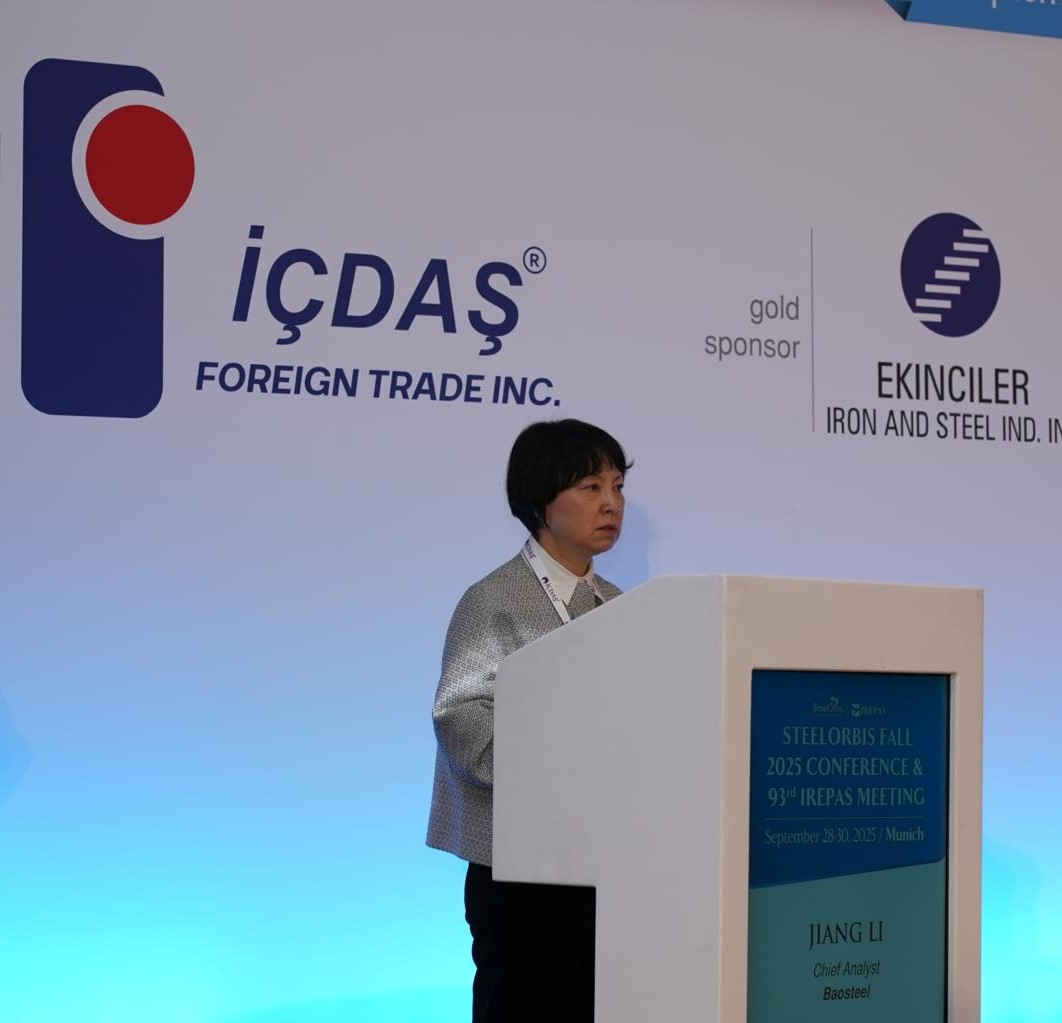Speaking at the SteelOrbis 2025 Fall Conference & 93rd IREPAS Meeting held in Munich on September 28-30, Jiang Li, chief analyst at Baosteel, talked about the Chinese economy and steel market, global trade shifts and the medium-to-long term steel demand forecast.
Ms. Li pointed out that Chinese news housing starts declined for the last four consecutive years, reflected in declines in Chinese crude steel apparent consumption as well. As a result, China’s rebar production is going to register a decline of 29 percent by the end of 2025, down from its peak level in 2020. She went on to say that China’s manufacturing upgrade is shifting steel demand from construction to manufacturing, indicated by the share of steel used in construction falling to 50 percent in the last four years, while the steel used in manufacturing rose to 50 percent in the same period. This shift is also visible in the changes in the mix of export products, signaling a transformation from labor-intensive goods to high-value products like electronics and machinery, she noted.

The Baosteel official also indicated that the steel product mix is shifting from longs to flats, with the share of flat products rising to 63 percent, compared to 37 percent of long products in 2025 so far. She emphasized that China’s HRC output has increased by 49 percent compared to 2020. Regarding production, Ms. Li said that Chinese crude steel output in the January-August period this year declined by 2.8 percent year on year.
Switching to the hot topic of Chinese exports, Ms. Li underlined that exports account for around 11 percent of steel production. Especially with semi-finished product exports, China and ASEAN countries have filled the gap left by Russia and Ukraine, in particular with Southeast Asia taking a share from the traditional exporters. On the other hand, she noted that Chinese HRC and CRC exports have declined due to trade cases, while exports of coated, pre-painted and electrical steel increased in the January-August period. Regarding long steel exports, Ms. Li said that China primarily exports to Asia, with the share of Asian countries in Chinese long steel exports exceeding 70 percent and having trended down since May this year.
In conclusion, the Baosteel official stated, “History shows downturns rarely last more than three years except during wars or global crises. Therefore, while Trump Tariff 2.0 creates short-term disruptions, the long-term growth path of global steel demand remains solid.” Commenting on protectionism, Ms. Li underlined that trade protectionism can shelter the steel industry temporarily, but it weakens downstream industries and ultimately reduces domestic demand.